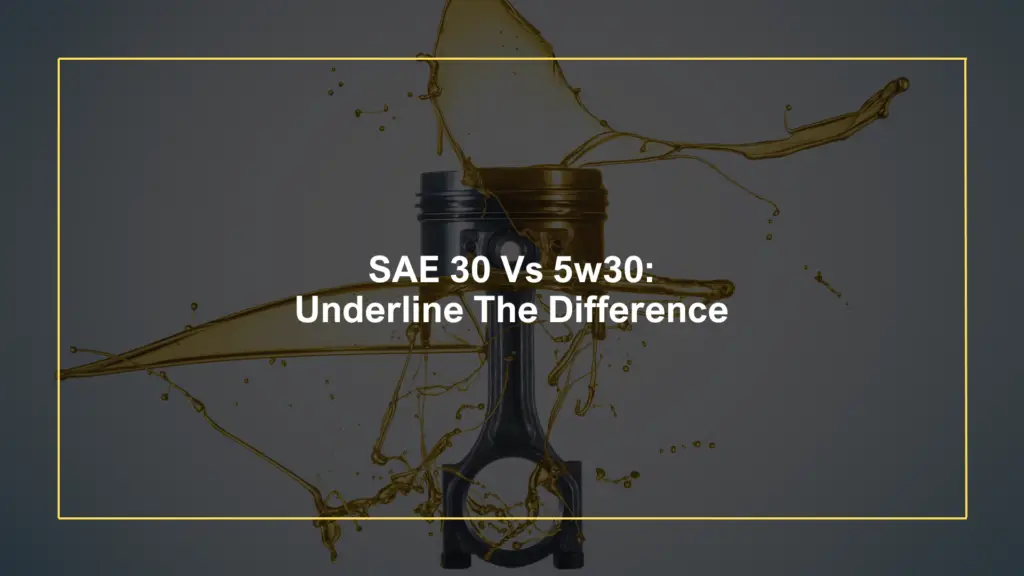
Transmission fluid plays a very crucial role in reducing wear inside the transmission. It works by keeping it running smoothly. But with time, this transmission fluid can break down. Do you know what your car’s transmission fluid color indicates? Many owners are not aware of the complications it could be signaling. Overlooking this fluid could cause serious issues for your vehicle. The transmission may require your attention even if your car looks fine outside. The color change may signal a problem with your oil. Let’s dig into itto know more details.
What is Transmission Fluid?
Transmission fluids are like the superheroes of your car. These special lubes are about keeping the gears inside your transmission from wearing out. Transmission fluids travel through your car’s transmission, keeping metal parts in good condition and ensuring seals and gaskets work well. They also help cool down the transmission by getting rid of heat. These fluids do more than just cooling. Transmission fluids are vital for engaging parts like clutch packs and torque converters. These fluids depend on whether your car has an automatic or manual gearbox. Each type has special additives, such as secret formulas for different jobs.
Why Color Matters?
The color of the transmission fluid is an indicator of your vehicle’s condition. It serves as a signal, showing if everything is working well or if there might be issues. Different colors suggest different things. For example, a darker color could signify potential problems. Regularly checking this color helps identify issues early and maintain your vehicle’s performance. Fresh fluid appears reddish, but as it ages, it darkens, indicating the need for replacement. Monitoring this color is all about ensuring your vehicle goes through routine examinations.
Normal Color Hues
Fresh transmission fluid appears reddish due to its additives and properties. Over time, it might darken slightly, which is still within the normal range. However, any color deviation from this reddish hue might signal potential issues. For example, a brownish tint might indicate contaminants, while a black color could suggest excessive wear or overheating. Knowing these normal color variations helps discern when a fluid change or further inspection might be necessary, ensuring your transmission stays in top shape.
Shades of Concern
Knowing about these color changes will help you act quickly. This identifies potential harm and keeps your car’s transmission working well.
- Brownish Tint: Indicates possible contamination, potentially from dirt or debris, signaling a need for inspection or fluid change to maintain transmission health.
- Black Color: Suggests significant wear or overheating, necessitating immediate attention to prevent further damage and ensure proper transmission function.
- Milky or Frothy Appearance: Signals potential water or coolant contamination, requiring inspection to prevent potential transmission issues.
Recommended Transmission Fluids
1. ACDelco GM Original Equipment

ACDelco Automatic Transmission Fluid
This transmission fluid by ACDelco works excellent in cold weather and helps your car shift smoothly. It’s designed to resist rust and last longer between changes. It fitsdifferent cars and protects the transmission from wearing out. You can get a 32 Fl Oz pack for $6.99. Many people also buy it with an oil filter for a total of $10.87.
Pros
- Excellent cold temperature performance.
- Longer fluid change intervals.
- Wide seal compatibility.
Cons
- Not suitable for vehicles with CVT or DCT transmissions.
- The viscosity may not be suitable for older vehicles.
2. Lubeguard Multi-Vehicle Fluid

Lubeguard Multi-Vehicle Fluid
The Lubegard 56125 is a synthetic formula designed primarily for wet clutch applications. Lubegard is famous for its performance in vehicles, such as the Audi A3 Etron and Volkswagen models. The package weighs 8.95 pounds and dimensions 12.95 x 9.61 into 4.72 inches. This USA product has improved fuel economy and noise reduction after use, reflecting its efficacy.
Pros
- It offers better fuel economy and reduced noise levels.
- Considered good quality, showcasing effectiveness in maintaining vehicle performance.
Cons
- It’s a bit Pricey.
- Lack of clarity or detailed instructions.
3. Pentosin ATF 44 Full Synthetic

Pentosin ATF 44 Full Synthetic
The Pentosin 1058212 ATF 44, priced at $73.09 for 5 liters, is specifically designed for select Japanese car transmissions and works with some American and European models. Users appreciate its compatibility with brands like Volkswagen and Honda, often using it to replace their original fluids. It’s praised for fixing transmission issues but has no reported cons, according to reviews.
Pros
- Compatible with various car brands.
- Replaces original fluids effectively.
Cons
- It is an expensive option.
- Availability can be limited.
4. Genuine Mitsubishi J2 ATF

Genuine Mitsubishi J2 ATF
This Dia Queen transmission fluid is explicitly designed for the 6-speed automatic Transmission in Mitsubishi Outlander models with V6 3.0L engines, specifically from 2007 to 2009. It’s crucial to adhere to the recommended capacity and avoid overfilling the transmission. Mitsubishi solely recommends this fluid for these vehicles, emphasizing its authenticity and suitability for optimal performance.
Pros
- It ensures compatibility and adherence to specifications.
- Gives optimal transmission performance.
- Suitable for the transmission’s 4.0 quarts capacity, avoiding overfilling risks.
Cons
- Contains chemicals listed under California Prop 65, which, with significant exposure, may pose health risks.
- It may be costly as compared to generic alternatives.
Comparison Table
| Aspect | Price | Volume | Vehicle Compatibility | Special Features | Rate |
|---|---|---|---|---|---|
| ACDelco Gold | $6.99 | 32 Fl Oz | Wide range of vehicles/transmissions | Frictional characteristics, wear protection, oxidation resistance | 9 |
| Pentosin ATF | $73.09 | 5 Liters | Specific vehicles/transmissions | Specifically formulated for Aisin AW transmissions | 8 |
| Lubegard Dual Clutch Fluid | $82.80 | 1.25 Gallon | Multi-Vehicle Dual Clutch, Wet Clutch | Wet clutch application | 7 |
| Genuine Mitsubishi J2 ATF | $49.99 | 4 Liters | 6-speed automatic transmission in Outlander 3.0L V6 engines, specifically for the 2007 to 2009 models. | Automatic Transmission Fluid | 8.5 |
Routine Maintenance
Here are some routine maintenance tips:
- Regularly inspect your transmission fluid level and condition according to your vehicle’s manual or recommended service intervals.
- Regular maintenance is more cost-effective than extensive repairs due to neglected transmission fluid issues.
- Always consult a mechanic or automotive professional for expert guidance. This must be done on ideal service intervals and fluid change specifics for your car’s make and model.
- An on-time fluid change may prevent wear and tear on transmission components. It ensures smooth operation and prolongs the vehicle’s lifespan.
- Change the transmission fluid as per guidelines provided by the manufacturer.
Transform Your Ride with the Right Fluid
Right transmission fluid not only ensures your vehicle’s smooth performance but also plays a crucial role in maintaining its health, and monitoring the color of your transmission fluid aids in early issue detection. Fresh, reddish fluid indicates optimal health, while color changes, like a brownish tint or a darkened appearance, signal potential problems. Thus, choosing and maintaining the right transmission fluid, alongside monitoring its color, collectively transforms your vehicle’s performance and longevity, ensuring a reliable driving experience.
FAQs
How Can I Check the ATF Level?
First, find the transmission dipstick and ensure the car is running and on level ground. After that, pull out the dipstick to check the fluid level against the markings.
Is the Red Transmission Fluid Good?
Red transmission fluid typically indicates good health. Any deviation from this color may suggest potential issues requiring attention.
How Often Should I Check My Transmission Fluid?
Following your vehicle’s manual or recommended service intervals. 30,000 to 60,000 miles is suggested in general.
Can I Mix Different Transmission Fluids?
Generally, mixing different transmission fluids is not recommended. Stick to the type recommended for your vehicle to maintain optimal performance and prevent potential issues.
Related Reads
- Bubbles In Transmission Fluid: Causes & Repair Guide Understand what bubbles in your transmission fluid indicate about your vehicle’s health and how to fix it – Read more.
- Power Steering Fluid Coming Out of Reservoir Cap: Causes & Solutions Learn about the symptoms and solutions for power steering fluid leaks to maintain your vehicle’s overall health – Find out more.
- Demystifying AW32 Hydraulic Oil: All You Need to Know Discover the properties and uses of AW32 hydraulic oil to ensure your vehicle’s hydraulic systems are in top shape – Discover now.
- Unparalleled Penetrating Oils for Rusted Nuts and Bolts Explore the best penetrating oils to keep your vehicle’s components rust-free and functioning smoothly – Learn more.
- Understanding ILSAC GF-6: The Best Engine Oils for Modern Vehicles Learn how the right engine oil, adhering to ILSAC GF-6 standards, can contribute to your vehicle’s overall health and performance – Explore here.


